If you asked me what I planned on doing when I woke up that morning a couple Saturdays ago, tackling the enormously overgrown clump of dyckias in the front garden was as remote a contender as washing the windows, which never ever cracks the top 20. To be honest, there were no ambitions at all that hot Saturday morning, the end to an even hotter week. (This week brought the Santa Ana winds, warm temperatures, not hot, but very, very dry.) I started off early Saturday morning with no real plan, so just grabbed a broom and began to sweep. Sweeping is always a good default until a plan formulates out of the post-Friday fog. I can’t remember the progression from sweeping to intimately grappling with this most dangerous of terrestrial bromeliads, but I’m sure it had something to do with being unable to sweep under the many rosettes spilling onto the bricks that catch all the duff from the jacarandas, the rachis and such. (If I didn’t have jacarandas in the parkway, there’s no way I’d be familiar with that term rachis, the main shaft of a compound leaf, in the jacaranda measuring about about a foot long.) Jacaranda detritus piles up in drifts, clogs the crowns of plants, burrows deep in the dasylirions, and is especially inaccessible in this spiny clump of dyckia. The dyckia came home as a solitary rosette from the first Western Hills Nursery in Occidental, California (now under new ownership), a very long time ago, and boy howdy has it prospered and multiplied. Whenever I see gorgeous varieties of diminutive dyckias in 4-inch pots on offer at plant sales, I have this barbed, cautionary tale at home to remind me to just walk on by.
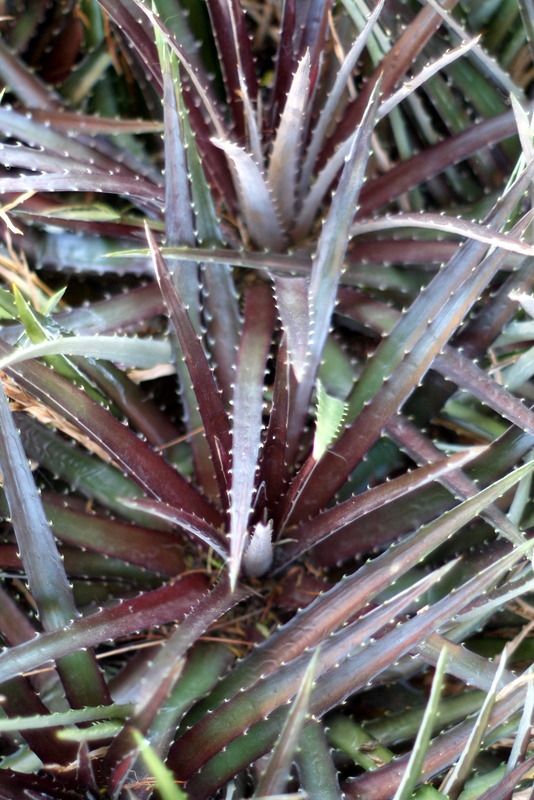
Those stiff, barbed leaves really mean business.
So many ways to inflict pain: poke, puncture, scratch, embed, scrape, stab, infiltrate. And with the hot, dry weather, my hands were hurting before I even started.
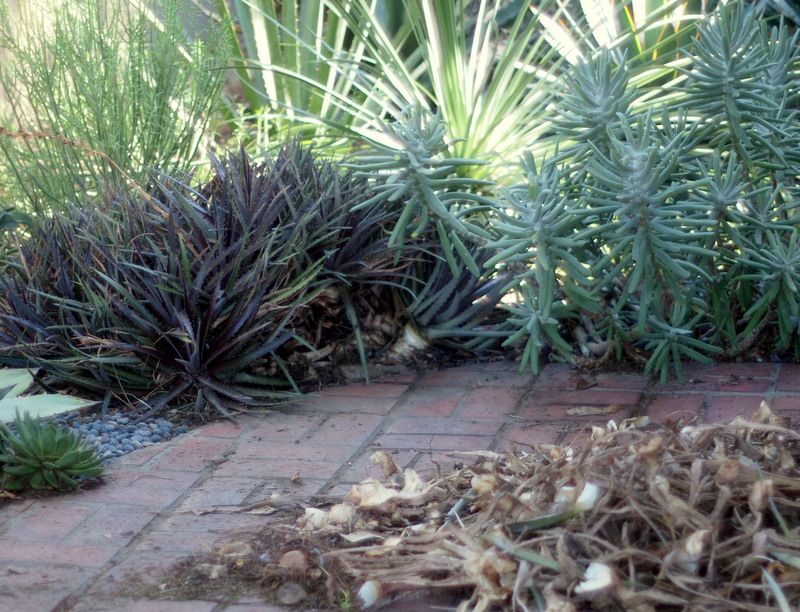
The clump has sprawled onto the bricks, making it impossible to sweep up the prodigious jacaranda debris that accumulates year-round. Leaflets, rachis, flowers, the occasional branch.
Instead of ignoring the piled-up debris sticking out from under the dyckia like I always do, I grabbed a shovel to loosen and pull out three largish rosettes off the bricks.
Vast amounts of dead, dried leaves were then able to be tugged and pried out of the interior of the clump.
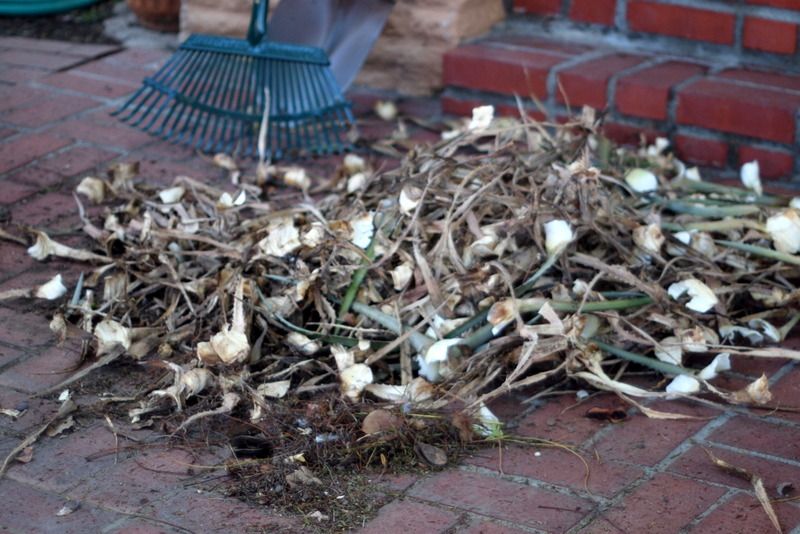
I wasn’t sure how far I would go with the shovel. Complete removal has crossed my mind many times.
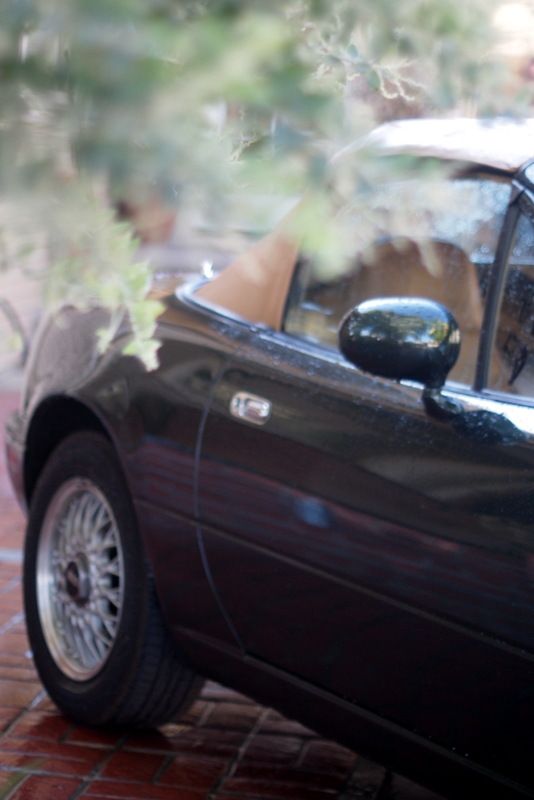
While I wrestled with the dyckia, others opted to polish their rims.
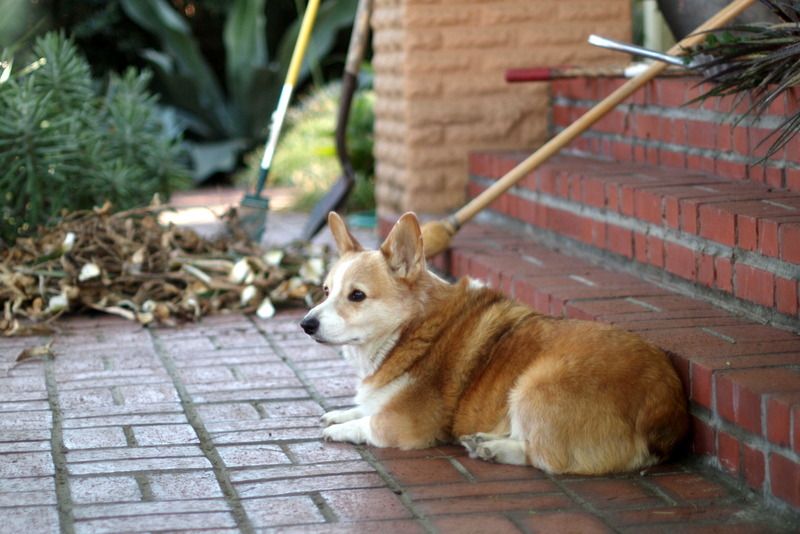
Or watch the Saturday morning parade of dogs on leashes passing the gate.
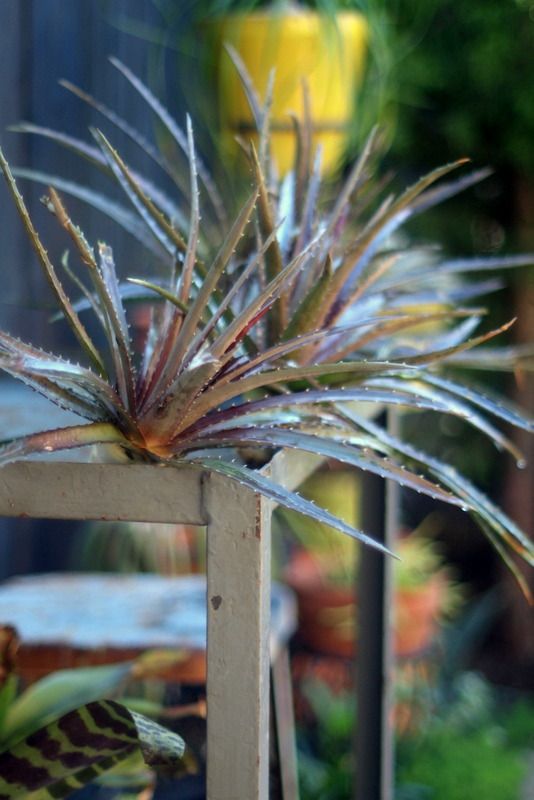
Seeing how beautiful the single rosettes were, I decided not to remove the clump. For now.
The three rosettes had very little root attached but were cleaned up anyway.
Because doesn’t it just look like a plant with a will to live?
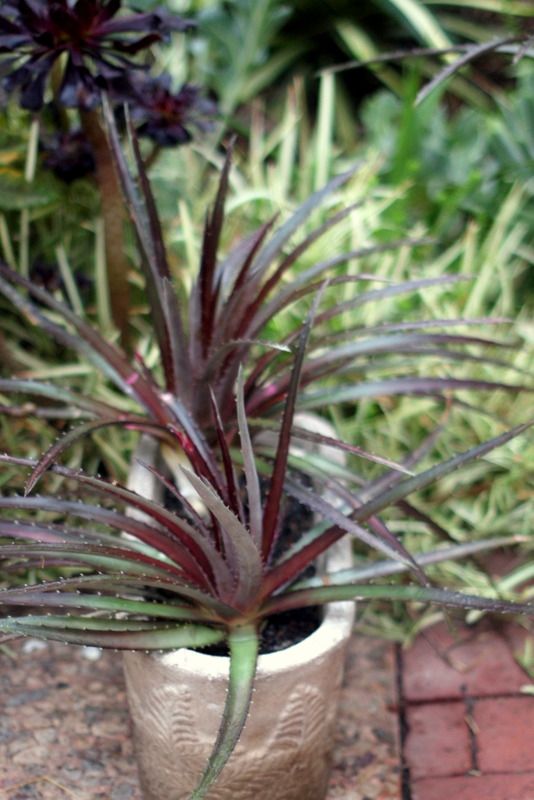
A couple were potted up in a shallow container with extra grit.
With a mature clump, you get the wands of Starburst-orange flowers, but to me dyckias are just as impressive as single rosettes.
Wonderful container plants, able to take temperatures down to 15 to 20 degrees. Here in zone 10 they grow into these massive clumps.
I really should bring more varieties home — but it will be for containers only.

The third was wrapped in moss and stuck in the opening to this pedestal I found cleaning out the garden shed.
It’s been around for so long, I forget when, where and why I brought it home. It nearly made it to the curb earlier in the week in a garage purge.
I checked this cutting today, and it hasn’t rooted yet but is still firm. If it doesn’t root, no big loss.
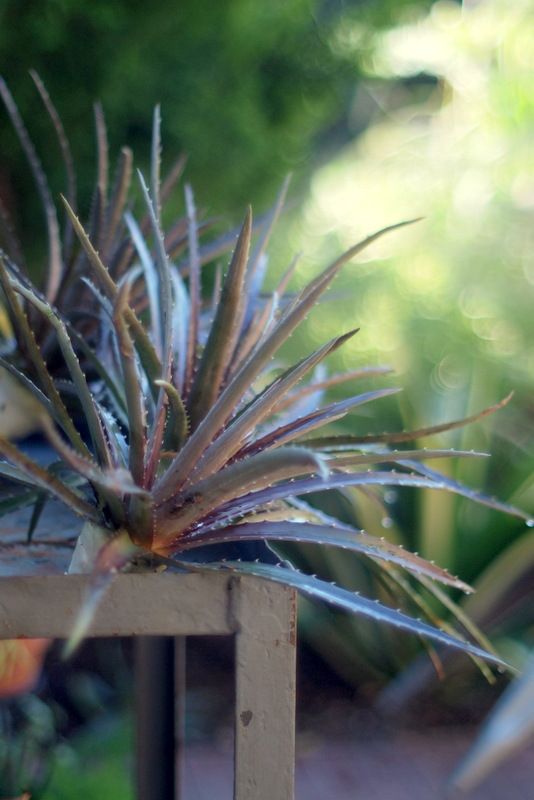
The trick to thinning out a dyckia clump is, first of all, obviously, wear gloves, long sleeves. And, secondly, move with slow, purposeful movements.
And not thinking about it too much beforehand helps too.

My lone Dykia is now and will forever remain in a pot. I never get too close.
A few hardy varieties survive our zone 8b winters in Austin as well. They are beautiful, but yes, those leaves are vicious.
Great post! While my own clump in the ground is much smaller than yours, I can already see the writing on the wall. Maybe I should remove it now and make do with containerized dyckias?
Oh, I think puyas are even worse because they get so much bigger. Someday dyckias or puyas will play a role as a torture device in a drug cartel movie, just wait and see!
I’m familiar with that kind of project progression but you are a very, very brave soul. After your cautionary tale, I think maybe I should move the Dyckia in my street-side bed to a pot while it’s still manageable. My others are in pots, with the exception of the one that is supposed to remain a relatively small, solitary rosette (which it had better do!).
Hah! Like ks, I have one in a pot that I never get too close to. It is very stabby. Fortunately for me, I bring it into the greenhouse before leaves start to fall, so I don’t have to clean out the crown.
They are beautiful but have reminded me of how dangerous they are on several occasions in nurseries so none has ever come home with me. Your clump is impressive,lovely and now quite tidy. You must feel a great sense of accomplishment.
In your list of what they can do, you forgot “slice”.
I got rid of my two massive clumps–no regrets. Rachis–thanks for the word! The neighbor’s trees send them over.
@Hoov, I think ultimately this clump is on the way out too. It’s an odd spot that gets more shade than sun in winter, so the only reason the dyckias remain is I’m not sure what else will handle those conditions so well.
@Kathy, you are a wise soul.
@Pam, Pam, I was surprised to learn how hardy some dyckias are — zone 10 makes me lazy on research!
@Gerhard, in my experience puyas are way more slow growing than dyckias. Whoever gets the house after I’m gone will have to deal with the puyas!
@Kris, planting dyckias streetside sounds like the perfect place for them. I should move my clump to the hellstrip!
@Alison, I do think that the winter vacay in the greenhouse keeps plants looking pristine.
@Peter, I mostly feel like I bailed early on the project. I was amazed at the amount of dead leaves pulled from the interior. That wasn’t even an objective, since they don’t show from the outside.
Odd gardener out here, or maybe I’m just a masochist, because I really don’t mind cleaning up/dividing Dyckias, and even do it without gloves or long sleeves. In my zone 9b/10a climate, I’ve found early summer with longer warm days is the best time to divide and reroot divisions that are essentially rootless, as long as they still have enough thickened base to create new roots. Since your winter weather is probably still mostly 70’s°F all winter, season of division isn’t as critical.
Now pruning roses or Puyas, that’s a whole other story! Being a big bromeliad fan, my arms and hands are almost always scratched up, seems completely normal to me.
David, yep, we’re still 70s and 80s here. And no matter how I try to protect them, my arms and hands almost always look like I was attacked by my cats.
My only dyckia clump is already outgrowing its pot after just one year. Maybe I’ll try dividing it and putting some in the ground next spring; if it survives, a Zone 8b winter should keep it in check, right?